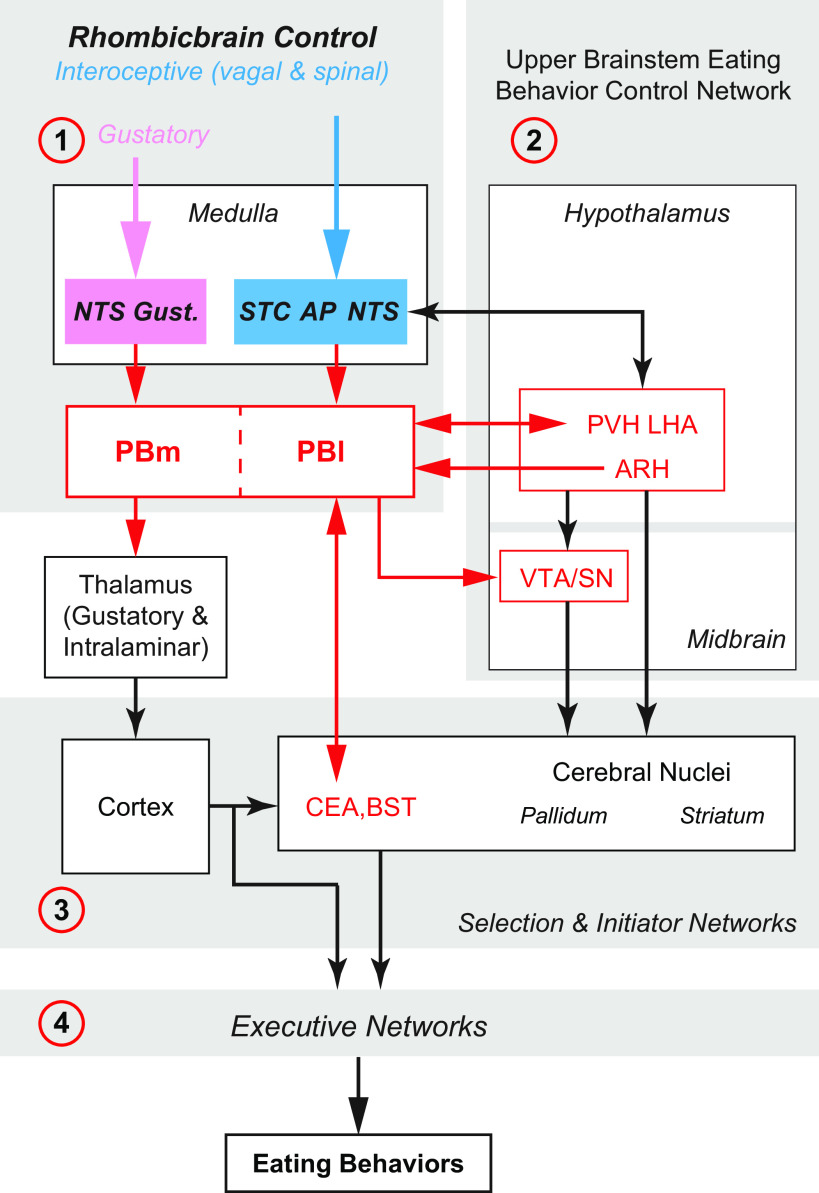FIGURE 19.
1: schematic showing how the lateral parabrachial nucleus (PBl) is part of the Rhombicbrain Control Network (1) within which it has connections with medullary regions including the nucleus of the solitary tract (NTS), the area postrema (AP), and the spinal trigeminal complex (STC). The PBl has robust bidirectional connections with two other brain networks that contribute to the timing of meal termination. 2: Upper Brainstem Eating Behavior Control network that includes the hypothalamus (see FIGURE 17 for more details of this network). 3: the motor Selection and Initiator Networks in the cortex and cerebral nuclei. Additional signals are provided by gustatory information that is conveyed to the motor selection and initiation networks by way of connections involving the medial part of the PB (PBm) and the thalamus. 4: appropriate behavioral actions are then executed using selected motor neurons in the Executive Networks. It seems reasonable to assume that during meals ongoing changes in the relative activity states of the connections between these control networks and the PB help determine when meals are terminated in a wide variety of situations. CEA, central nucleus of the amygdala; BST, bed nuclei of the terminal stria; PVH, paraventricular hypothalamic nucleus; ARH, arcuate nucleus; SN, sunstantia nigra; VTN, ventral tegmental area; LHA, lateral hypothalamic area.

